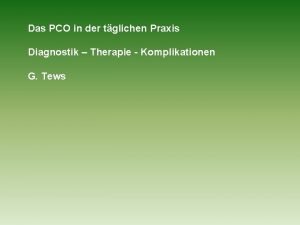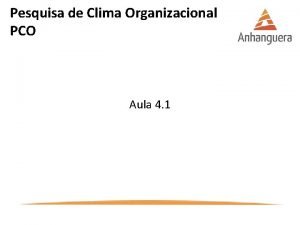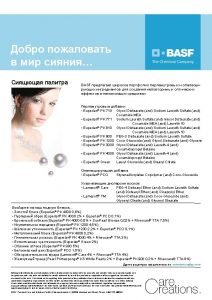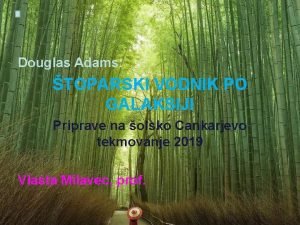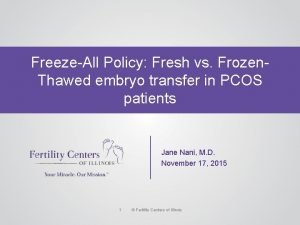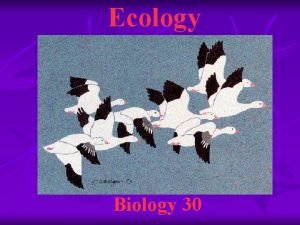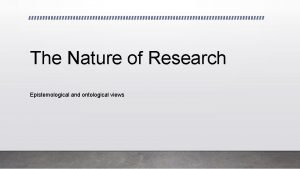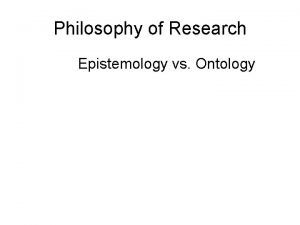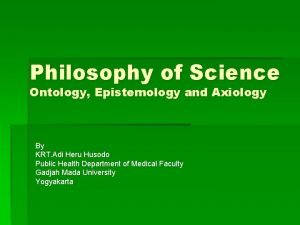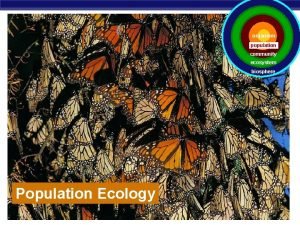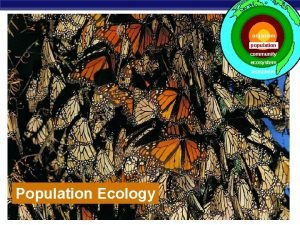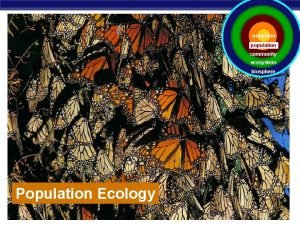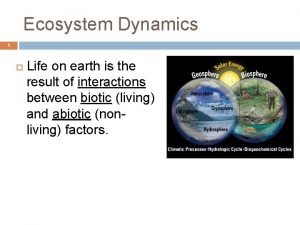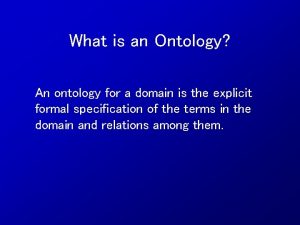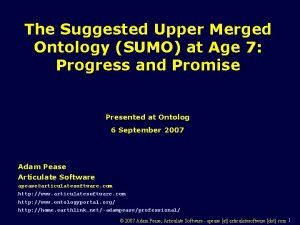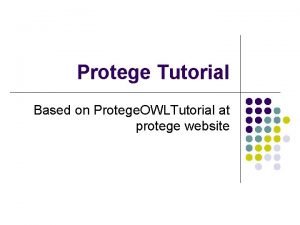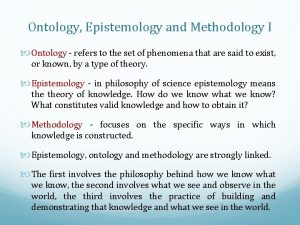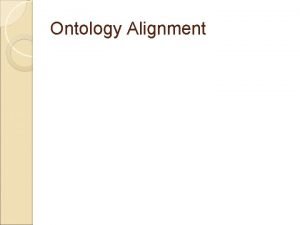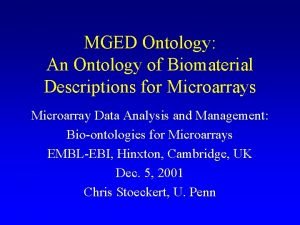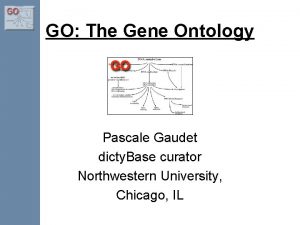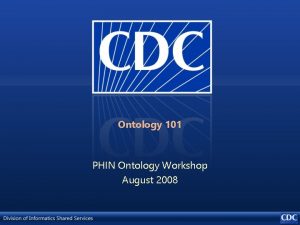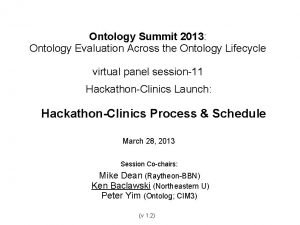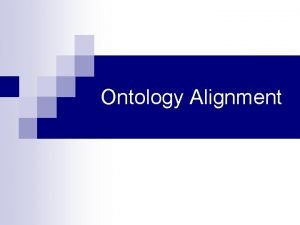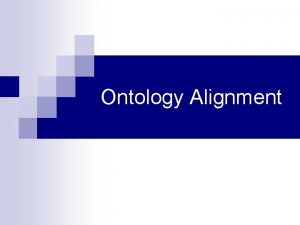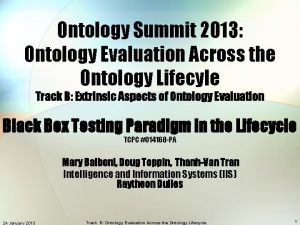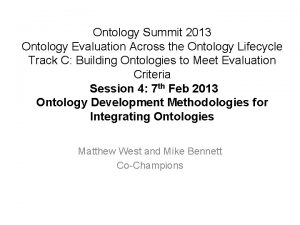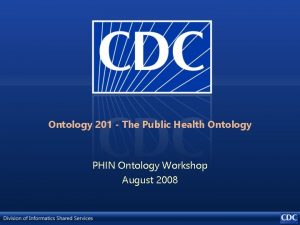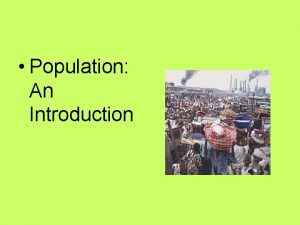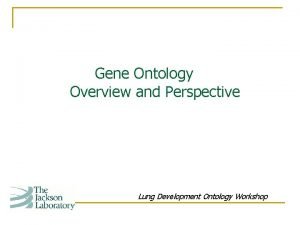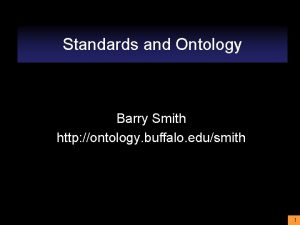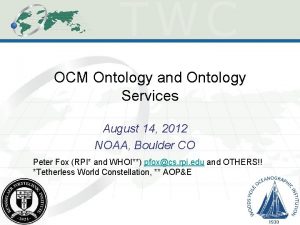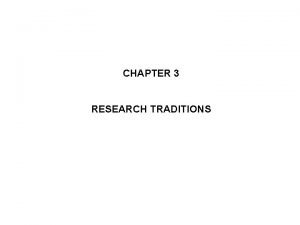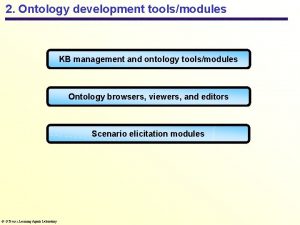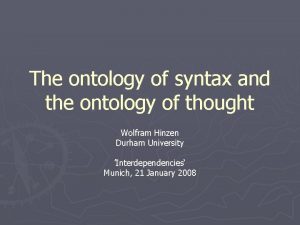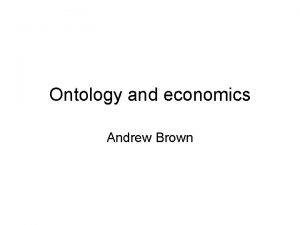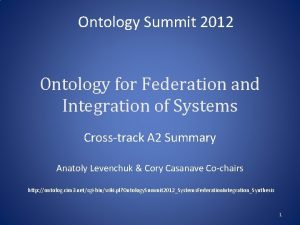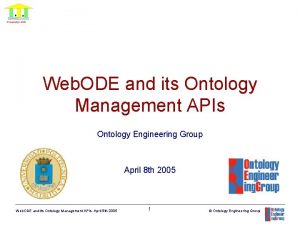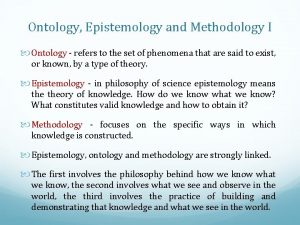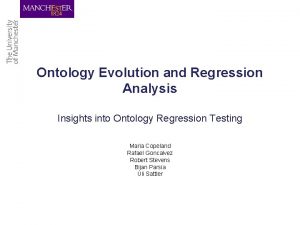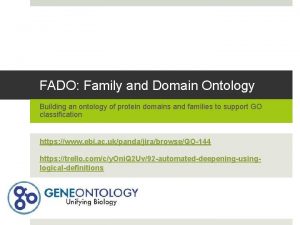Introduction to the Population and Community Ontology PCO



























- Slides: 27

Introduction to the Population and Community Ontology (PCO) Ramona Walls rlwalls 2008@gmail. com http: //code. google. com/p/popcomm-ontology/ popcomm-ontology@googlegroups. com


The PCO: • is rooted in the Basic Formal Ontology. • covers material entities, qualities, and processes that pertain to collections of organisms. • imports terms from and exports terms to other OBO library ontologies, such as CARO, PATO, GO.

Domain of the PCO: • collections of organisms (populations and communities) • qualities of collections of organisms (with PATO) • processes that have collections of organisms as participants (with GO)

Why study collections of organisms? • Ecology and Evolution: – intra- and interspecific interactions – population as the unit of evolution • Medicine: – collections of humans, pathogens, vectors – epidemiology, disease transmission, sociology • Agriculture: – plant pathology, animal diseases, weeds

Examples of collections of organisms: • A unicellular colony • A microorganism infection (the bacteria in a bacteremia, the viruses in a viremia) • A herd (bunch of big animals living in close proximity) • The sum of the infectious agents in a herd's infection (all potentially eradicated with the same antibiotic) • A the occupants of a biological niche (most susceptible to an panspecies toxin) • My microbiome • Ashkenazi jews (some common genetic elements due to being a herd at some earlier part of history) • People with malaria • People immune to HIV (Thanks to Alan Ruttenberg)

Diverse definitions of population on Bio. Portal: • SNOMED: A social condition (no text definition) • MESH: The total number of individuals inhabiting a particular region or area. • OBI: a population is a collection of individuals from the same taxonomic class living, counted or sampled at a particular site or in a particular area • Experimental Factor Ontology: A population is a group of material entities consisting of individuals which share a particular characteristic such as inhabiting a particular region or area or ability to interbreed. • NIFSTID: A collection of independent organismal entities engaged in some form of spatio-temporal interaction or aggregate behavior • Malaria Ontology: An aggregate of organisms. • NCI Thesaurus (population group): A group of individuals united by a common factor (e. g. , geographic location, ethnicity, disease, age, gender) • ICF: Groups of people living in a given environment who share the same pattern of environmental adaptation.

Definitions of population from some evolutionary biologists: • Gotelli’s A Primer of Ecology: A group of individuals, all of the same species, that live in the same place. Although it is sometimes difficult to define the physical boundaries of a population, the individuals within a population have the potential to reproduce with one another during the course of their lifetimes. • Futuyma’s Evolution: A group of conspecific organisms that occupy a more or less well defined geographic region and exhibit reproductive continuity from generation to generation; ecological and reproductive interactions are more frequent among these individuals than with members of other populations of the same species.

Essential elements of the definition of a population: • More than one organism (or virus or viroid) • All members of the same species • Geographical proximity – potential for reproductive and other ecological interactions • Maximal – a random sub-sample of a population is not a population in the biological sense (but is in statistical sense) – sub-populations and meta-populations are populations

Examples of (possible) populations: • A herd of cattle • The sunfish living in Roth Pond • The lady slipper orchids living in Kettle Hole County Park • The pigeons in Central Park • The people of Buffalo

Collections of organisms of a single species that are not populations: • • People with malaria People immune to HIV Every oak tree in Pennsylvania Five sunfish chosen randomly from Roth Pond

Definitions of ecological community from some ecologists: • From Morin’s Community Ecology (paraphrased): A collection of organisms of at least two different species, living in a particular area. • From Begon et al. ’s Ecology: The species that occur together in space and time.

Essential elements of the definition of an ecological community: • More than one organism • Members of at least two species • Geographical proximity – living in the same area Definitions disagree on whether or not: • the organisms must interact with each other (but generally some interaction is assumed) • a community must include all organisms present at a location

The borders of an ecological community may be defined by: • discrete physical or habitat boundaries – the biota of a pond, a decaying carcass, your gut • the presences of a dominant species – beech forest community – tall grass prairie community • statistically similar species composition in multidimensional space • significant interactions among members

Some important subsets (sub-classes) of ecological community • guild: A collection organisms of different species that use resources in a similar way. – Often used in the sense of a trophic guild or trophic level (herbivores, detritivores, primary producers, etc. ) • taxonomically-defined community: A set of taxonomically related species within a community (plant community, insect community, bird community, etc. )

Communities, ecosystems, and biomes • An ecosystem is an ecological community plus the abiotic (physical) environmental features (soil, air, water, sunlight, slope). • Many ecologists consider a biome to be a type of large-scale ecological community.

Biome and its subclasses are covered by the Environment Ontology (Env. O) biome (Env. O: 00000428) def. : A major class of ecologically similar communities of plants, animals, and other organisms. Biomes are defined based on factors such as plant structures (such as trees, shrubs, and grasses), leaf types (such as broadleaf and needleleaf), plant spacing (forest, woodland, savanna), and other factors like climate. . . (http: //www. environmentontology. org) examples include: tundra biome, Mediterranean forest biome, small river biome, estuarine biome

Qualities of collections of organisms • Population quality: A quality that inheres in a population. – carry capacity – population birth rate, death rate, growth rate, etc. – sex ratio • Ecological community quality: A quality that inheres in a community – diversity – species richness – stability, resilience – community structure – number of trophic levels

Population and community qualities are being developed in collaboration with PATO • population quality (PATO: 0002003) =def. A quality that inheres in an entire population or part of a population. – Has two subclasses: mixed sex (PATO: 0001338) and morbidity (PATO: 0001415). • organismal quality (PATO: 0001995) =def. A quality that inheres in an entire organism or part of an organism. • Suggest that PATO redefine organismal quality as a quality that inheres in an entire CARO: organism or a PCO: collection of organisms, possibly get rid of these terms. – should PATO have categories of qualities that are defined only by the entity in which they inhere?

Processes that have collections of organisms as participants • Population process • Community process • sub-classes of BFO: process – may move to GO: biological process

PCO: population process • def. : A process that has as primary participant a population. – Population processes may depend on the processes of individual organisms {e. g. , population growth reflects the cumulative multicellular organism reproduction (GO: 0032504) and death (GO: 0016265) of all individuals in a population} but cannot be described for an individual organism. – Some processes (e. g. , evolution, extinction) can also occur at both the species and the population level, so PCO distinguishes between, for example, population extinction and species extinction.

PCO: population process • Examples: – population growth • exponential population growth • logistic population growth – population extinction – evolution – selection – adaptation – immigration, emigration

Community processes in the context of the GO • biological process (GO: 0008150): Any process specifically pertinent to the functioning of integrated living units: cells, tissues, organs, and organisms. A process is a collection of molecular events with a defined beginning and end. • multi-organism process (GO: 0051704): Any process in which an organism has an effect on another organism of the same or different species. • ecological community process (PCO: 0000014): A process that has as primary participants organisms of two different species. – may be replaced by more specific GO terms (next slide)

Community processes in the context of the GO sub-classes of multi-organism process: • interspecies interaction between organisms (GO: 0044419): Any process in which an organism has an effect on an organism of a different species. • intraspecies interaction between organisms (GO: 0051703): Any process in which an organism has an effect on an organism of the same species. • behavioral interaction between organisms (GO: 0051705): Any process in which an organism has a behavioral effect on another organism of the same or different species.

PCO: community process • examples: – competition – predation – facilitation – mutualism – parasitism – pollination • Some of these terms are already in the GO. PCO will work with GO to define new terms, then import them into PCO as needed.

Applications: Other ontologies that need terms from the PCO • Ontology for Biomedical Investigations (OBI) • Any ontology that studies interactions between people or other organisms (social ontology) • Infectious Disease Ontology (IDO) – Any biomedical ontology that describes groups of pathogens, hosts, or vectors • NCBO-Bio. Portal lists results for 45 ontologies for “population” and 21 for “community”, with variable definitions. Terminology should be unified across ontologies.

Application of the PCO: ecological modeling + - has positive effect has negative effect has stage has quality unknown effect spider sp. + predation sex ratio - ? deer bee sp. 1 - + herbivory seedling + vegetative populations quality life cycle stage community process population process ? leaf size + reproductive reproduction population bee sp. 2 pollination + recruitment - competition + seed - mutualism + Trillium ? flower color
 Ascites punktion
Ascites punktion Sobre pesquisa de clima organizacional pco
Sobre pesquisa de clima organizacional pco Euperlan pk 1200
Euperlan pk 1200 Esepta
Esepta Pčo
Pčo Culdecentesis
Culdecentesis Chapter 4 section 1 population dynamics study guide
Chapter 4 section 1 population dynamics study guide Section 1 population dynamics
Section 1 population dynamics Population ecology section 1 population dynamics
Population ecology section 1 population dynamics Study guide chapter 4 section 1 population dynamics
Study guide chapter 4 section 1 population dynamics Difference between population and community
Difference between population and community Research ontology and epistemology
Research ontology and epistemology Ontology in research
Ontology in research Ontology, epistemology, axiology
Ontology, epistemology, axiology Exponential growth rate formula biology
Exponential growth rate formula biology Population community ecosystem biosphere
Population community ecosystem biosphere Population vs community ecology
Population vs community ecology Levels of ecological organization from smallest to largest
Levels of ecological organization from smallest to largest Population vs community ecology
Population vs community ecology Organism population community ecosystem biosphere
Organism population community ecosystem biosphere Individual population community ecosystem
Individual population community ecosystem What is an ontology
What is an ontology Suggested upper merged ontology
Suggested upper merged ontology Protege pizza ontology
Protege pizza ontology Epistemology vs ontology
Epistemology vs ontology Ontology alignment
Ontology alignment Types of ontology
Types of ontology What is meant by gene ontology?
What is meant by gene ontology?
